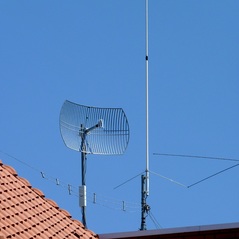Investigating Routing Policies in the Wild

Models of Internet routing are critical for studies of Internet security, reliability and evolution, which often rely on simulations of the Internet’s routing system. Accurate models are difficult to build and suffer from a dearth of ground truth data, as ISPs often treat their connectivity and routing policies as trade secrets. In this environment, researchers rely on a number of simplifying assumptions and models proposed over a decade ago, which are widely criticized for their inability to capture routing policies employed in practice. In this study we put Internet topologies and models under the microscope to understand where they fail to capture real routing behavior. We measure data plane paths from thousands of vantage points, located in eyeball networks around the globe, and find that between 14-35% of routing decisions are not explained by existing models. We then investigate these cases, and identify root causes such as selective prefix announcement, misclassification of undersea cables, and geographic constraints. Our work highlights the need for models that address such cases, and motivates the need for further investigation of evolving Internet connectivity.
PAPER LINK
PAPER LINK
Real time detection of BGP hijacks and interceptions

BGP anomalies like BGP hijacks and interceptions are not rare in the Internet. Worse yet, the impact of traffic interception is practically unknown, with even large-scale and long-lasting events apparently going unnoticed by the victims. In collaboration with CAIDA at UCSD, We're building a system that uses various data sources, tools and heuristics to detect BGP hijacks and interceptions in real time. By leveraging our measurement and data processing infrastructure, this project aims to: (i) investigate, develop, and experimentally evaluate novel methodologies to automatically detect traffic interception and hijack events and to characterize their extent, frequency, and impact; (ii) extend the research team’s measurement infrastructure to detect and report episodes of traffic interception based on BGP hijacking; and (iii) document such events, providing datasets to researchers and summary statistics and reports to operators, emergency response teams, law enforcement agencies, and policy makers.
Loss Differentiation in High Speed WLANs

A fundamental problem in 802.11 wireless networks is to accurately determine the cause of packet losses. This becomes increasingly important as wireless data rates scale to Gbps, where lack of loss differentiation leads to higher loss in throughput. Recent and upcoming high-speed WLAN standards, such as 802.11n and 802.11ac, use frame aggregation and block acknowledgements for achieving efficient communication. This paper presents BLMon, a framework for loss differentiation, that uses loss patterns within aggregate frames and aggregate frame retries to achieve accurate and low overhead loss differentiation. Towards this end, we carry out a detailed measurement study on a real testbed to ascertain the differences in loss patterns due to noise, collisions, and hidden nodes. We then devise metrics to quantitatively capture these differences. Finally, we design BLMon, which collectively uses these metrics to infer the cause of loss without requiring any out-of-band communication, protocol changes, or customized hardware support. BLMon can be readily deployed on commodity devices using only driver-level changes at the sender-side. We implement BLMon in the ath9k driver and using real testbed experiments, show that it can provide up to 5× improvement in throughput.
PAPER LINK
PAPER LINK
Efficient and Resilient Datacenters

Predictable performance is important for many cloud applications. Using information about datacenter failures from previous studies, we showed that many datacenter network proposals fall short of meeting the high availability objective of typical cloud applications. The project explored the design space of providing both predictable
performance and resilience.
performance and resilience.
Long Distance WiFi

Long-distance WiFi networks are a cost-effective means for providing Internet connectivity in developing regions. In these regions, providing support for real-time applications is considered an important requirement. Unlike prior works, this project studies the effectiveness of features (e.g., frame aggregation and channel bonding) of 802.11n/ac in improving the performance of long-distance WiFi links as well as their ability to support real-time applications. Towards this end, we established a 7.1 km link using commodity 802.11n equipment. Our results yielded a throughput of up to 36 Mbps by only changing 802.11 parameter values. In addition, we show that our setup also meets the delay and jitter requirements of real-time applications.
PAPER LINK
PAPER LINK
